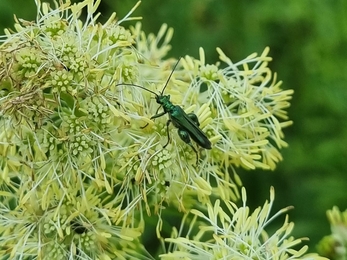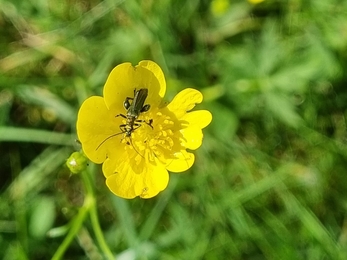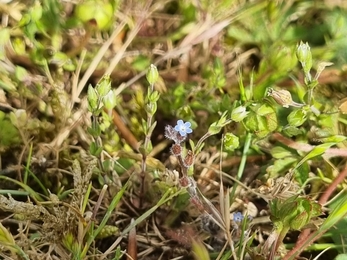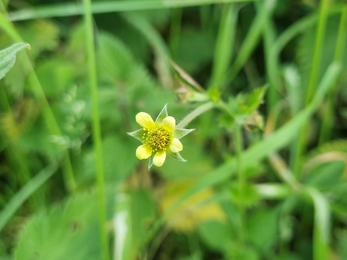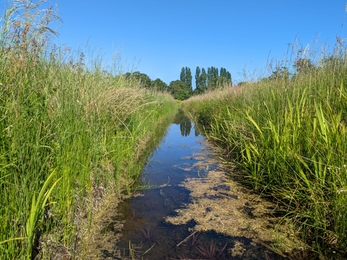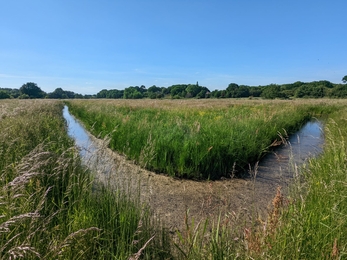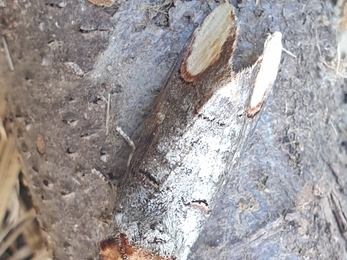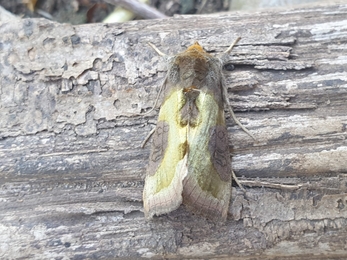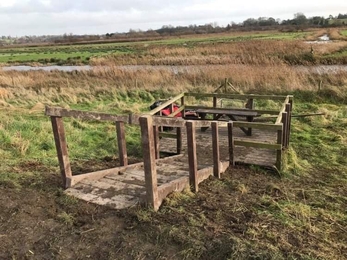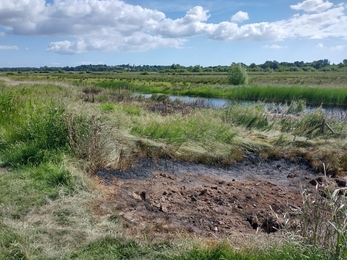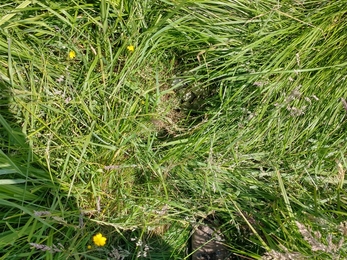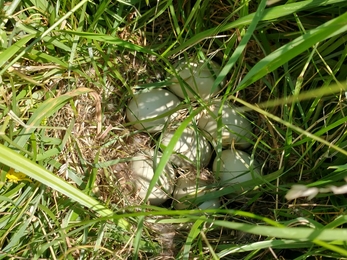Weekly wild news from our reserves - 17 June 2022
Male lesser stag beetle at Newbourne Springs - Rachel Norman
Warden Gavin took this spectacular shot of two female marsh harriers with nests less than 100 metres apart from each other having a confrontation in the sky above Castle Marshes. Both these birds are being looked after by a single male.
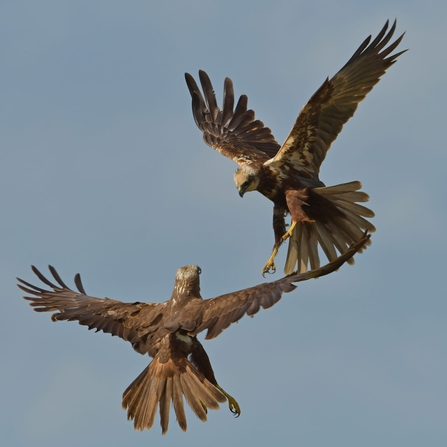
Marsh harriers at Castle Marshes - Gavin Durrant
Pochard ducklings
We are thrilled that pochard are continuing to breed successfully at Trimley Marshes again this year, with 2 broods seen so far. There are very few breeding locations in the county for this species, with just a few hundred nesting in the UK annually. The pochard is a diving duck and feeds on plant seeds, waterweed, snails and other aquatic invertebrates below the water's surface.
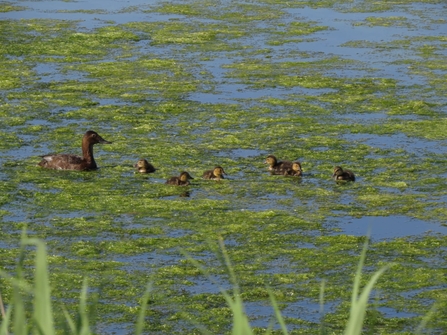
Pochard with ducklings - Nigel Odin
Garganey
We also still have garganey on site at Trimley, with hopes that it could be a pair that intend to breed. This is a scarce summer migrant duck species from Africa, with fewer than 100 known breeding UK pairs annually. It's also a Schedule 1 protected species. Summer migrant ducks contrast with many duck species which migrate to our shores in autumn and wintertime.

Garganey – Nigel Odin
Lesser stag beetle
The lesser stag beetle may be smaller than its famous cousin, but it is still a relatively large beetle with impressive jaws. Adults can be found in woodland, parkland and hedgerows during the summer; they can often be seen resting in the sun on tree trunks. The larvae depend on old trees and rotting wood to live in and feed on, and both adults and larvae can be found in the decaying wood of ash, common beech and apple. The adults can be seen flying about at night, sometimes attracted to outdoor lights. They mate and lay their eggs in a suitable piece of decaying wood. Warden Rachel found this beauty at Newbourne Springs.
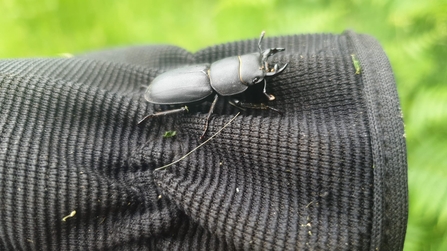
Male lesser stag beetle at Newbourne Springs - Rachel Norman
A pair of swift chicks
There was great excitement at Lackford Lakes when we discovered that both of our eggs in one of the swift boxes had hatched. Watch this clip of the parents checking on their little arrivals.
Swollen thighs
Male thick legged flower beetles have the appearance of swollen thighs, and both males and females have the gorgeous metallic green colouring.
Skullcap
Skullcap is a delicate flower which blooms between June and September and can be found on damp ground, such as marshes and fens, like this one at Black Bourn Valley. It is pollinated by long-tongued bees, and it is also the only foodplant of the skullcap leaf beetle - a yellowy-brown beetle with a black head and four spots on its back.
Skullcap has violet-blue, tube-like flowers that have two 'lips' and sit in pairs in the leaf axils (where they join the stem). They have square stems and oval leaves, with toothed margins, that appear in opposite pairs. The closely related Lesser Skullcap has pink flowers.

Skullcap at Black Bourn Valley – Joe Bell-Tye
Crested dog’s tail
Once grown as a crop and used for making bonnets, crested dog's-tail is a common, tufted, perennial grass of grasslands and meadows. Growing in compact tufts, it is a rather stiff-looking grass with narrow, green leaves. It has short, upright flower spikes with a tightly packed cluster of spikelets (containing the flowers) arranged in a long, rectangular shape.
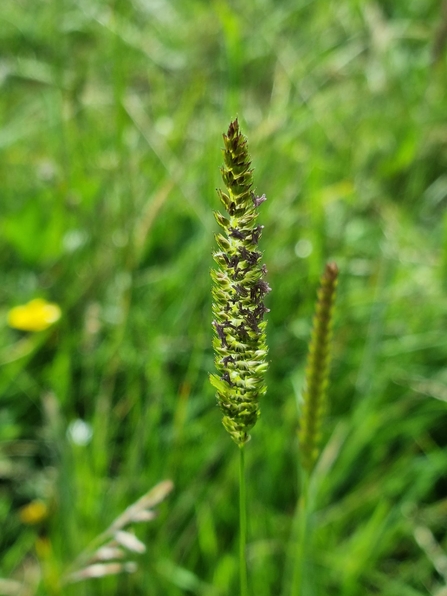
Crested dog’s tail at Black Bourn Valley – Joe Bell-Tye
More Black Bourn Valley beauties
We recommend a visit to Black Bourn Valley in the summer months to see this successful rewilding project with its gorgeous wildflowers.
Breckland goldmoss
Also known as 'goldmoss' due to its dense, low-growing nature and yellow flowers, biting stonecrop can be seen on well-drained ground like the Breckland area at Lackford Lakes. It has yellow, star-shaped flowers that appear from May to July, and fleshy leaves that have a biting-hot taste. It attracts many bees in search of nectar.

Biting stonecrop at Lackford - Will Cranstoun
More Lackford Lakes wonders
There is so much to see at Lackford Lakes, it’s buzzing with damselflies, demoiselles and other insects, and wonderful wildflowers displaying.
Foot drains for dragonflies
Choked up foot drains that were cleared out in the winter are looking great at Church Farm; the dragonflies appreciate the work with Norfolk hawkers patrolling!
More marvellous moths
Warden Dan recorded even more amazing moths at Church Farm this week.
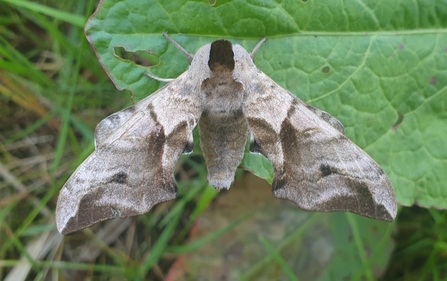
Eyed hawk moth - Dan Doughty
Disappointing damage at Oulton Marshes
The North Suffolk team were extremely disappointed to find the Oulton Marshes viewing platform has been completely destroyed by a disposable barbecue fire. Thank goodness the amazing Lowestoft fire crews swiftly put it out before it spread further on the reserve! It’s vital that visitors do not have fires or barbecues on nature reserves as the results can be devastating.
Mallard nest
A mallard almost flew into Warden Lewis’s face to stop to alert him of her nest - very well hidden with seven eggs tucked away in the grass at Oulton Marshes!
Snorkeling scorpion
Also at Oulton Marshes this water scorpion was trying to find the surface with its breathing tube to take a breath, but it was just a bit too deep to reach...


